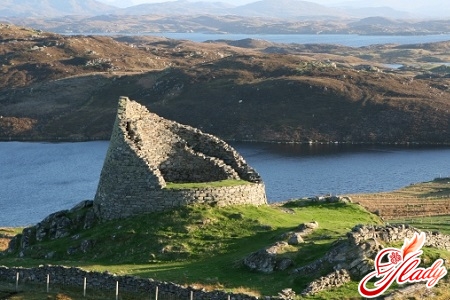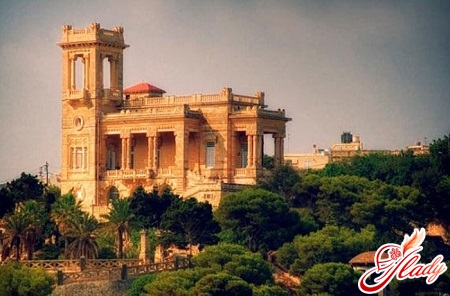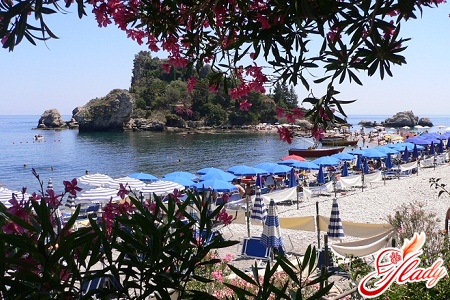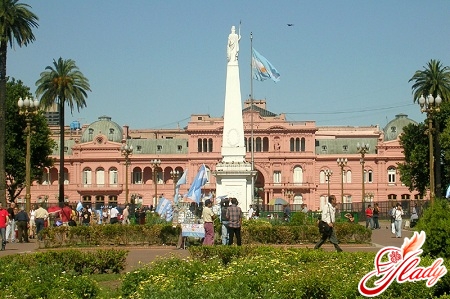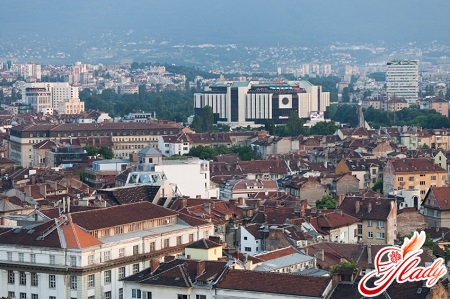 The European country Bulgaria is famous for itsBlack Sea resorts, picturesque landscapes, colorful folk traditions and an abundance of historical monuments. The sights of Bulgaria are the city-museums of world significance: Koprivshtitsa, Tryavna, Zheravna, Shiroko-Lyka, Melnik and others, as well as caves, rock monasteries, nature reserves, etc. Bulgaria is famous for its wineries producing excellent products, as well as regular wine exhibitions, which have made it famous as one of the centers of "wine" tourism. More than 2,000 mineral springs make Bulgaria a health resort of world significance.
The European country Bulgaria is famous for itsBlack Sea resorts, picturesque landscapes, colorful folk traditions and an abundance of historical monuments. The sights of Bulgaria are the city-museums of world significance: Koprivshtitsa, Tryavna, Zheravna, Shiroko-Lyka, Melnik and others, as well as caves, rock monasteries, nature reserves, etc. Bulgaria is famous for its wineries producing excellent products, as well as regular wine exhibitions, which have made it famous as one of the centers of "wine" tourism. More than 2,000 mineral springs make Bulgaria a health resort of world significance.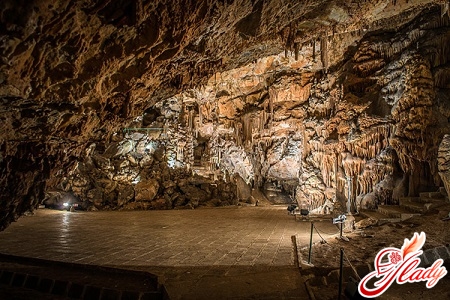
Siyeva hole and Pirin National Park
The Syeva Hole Cave is one of the 9equipped caves in Bulgaria. It is named after one of the twin brothers Seyu and Syyu, who accidentally discovered it and hid in it during the Ottoman rule. The cave is located near the village of Brestnitsa, which is 90 km from the capital of Bulgaria, Sofia. It is 205 m long. The thickness of the ceiling vault is 12 m. The largest cave stalactite has a circumference of 60 meters. Under the cave, at a depth of 70 meters, a river flows. The constant air temperature in the cave is 7-11 degrees Celsius, humidity is 90-98%. The air in the cave is favorable for the prevention of respiratory diseases. Films are shot here and weddings are held. The cave consists of 5 halls:
Pirin National Park.It was created in 1962 and was called Vihren National Park. In 1974, after its expansion, it was renamed Pirin National Park. Pirin Mountain is the largest national park in Bulgaria. It is a biosphere reserve. The area is 26,480 hectares. Over 60% of the area is covered by forests. In this park grows Baikusheva Mura (Murabalkan pine) - the oldest tree in Bulgaria. Its age is over 1,200 years. In this reserve there are more than 50 peaks, the height of which is over 2,600 meters, many majestic chasms, beautiful waterfalls and caves, 70 lakes of glacial origin. All this gives the mountain a unique charm. From Pirin Mountain to Sofia 100 km. Pirin National Park is a natural monument protected by UNESCO.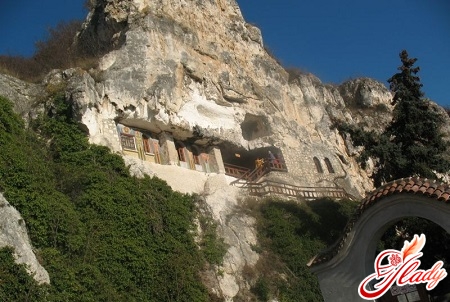
Rock churches near the village of Ivanovo and Razboshky monastery
The complex of rock churches includeschurches, chapels and monastic cells carved into the rocks at a height of 6-10 meters on both sides of the Rusenski Lom River in northeastern Bulgaria. The complex was built in the 13th century, and monks lived there until the 17th century. Wall paintings (Tarnovo painting) and inscriptions from that time have been preserved. The complex is located 4 km from the village of Ivanovo, and 460 km from Sofia. These rock churches are Bulgarian landmarks, declared a UNESCO World Heritage Site in 1983. Bulgaria adopted Orthodox Christianity during the reign of Tsar Ivan II, but Bulgaria had its own patriarch who was not subordinate to Constantinople. Monk Gioacchino became the first patriarch. He lived as a hermit in a cave near the Rusenski Lom River. Ivan II revered Gioacchino and entrusted him with the construction of a rock monastery. Construction period: 1218-1235. During the Second Bulgarian Kingdom, the monastery was the center of spiritual life in the area and received rich royal and boyar gifts. During the conquest of the country by the Ottomans (Turks) in 1396, the monastery was abandoned. Razboshki Monastery (Vvedenie Bogorodichno) is a Bulgarian women's monastery. Today it is subordinate to the Bulgarian Orthodox Church of the Sofia Diocese. The temple's feast day is November 2. No exact information about the foundation has been preserved, but it is known that hermit nuns lived in mountain caves already in the Middle Ages, and the monastery church was built in the 14th century. Initially, the church was a cave in which the hermits prayed to God in complete solitude. Then, at an altitude of 50 m, on a platform above the cave, a church in the shape of a ship was built. In the 18th-19th centuries, a rock monastery was founded. There is documentary evidence that the monastery was completely reconstructed in 1841: residential buildings were built on the plain of the right bank of the river in a quadrangular courtyard, and the Church of the Entry of Bogorodchino remained outside the monastery, but continues to be the monastery church to this day. The monastery is located a little more than 1 km from the village of Razboishche, 79 km northwest of Sofia, near the Nishava River, in the rocks. This monastery is declared a cultural monument.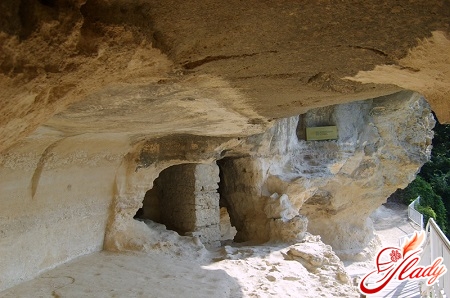
Aladzha Monastery and Rozhen Monastery
Aladzha Monastery - medieval rockмонастырский комплекс. Находится в лесу Ханчука, в 14 км к северо-востоку от города Варна. Предполагается, что отшельники-христиане жили здесь еще в IV веке в специально выдолбленных пещерах. Монастырь основан примерно в XIII веке. Расположен в два яруса: монашеские кельи, комнаты и небольшая церковь — на нижнем ярусе; часовня — на верхнем. Название монастырь получил благодаря фрескам, его название означает в переводе с турецкого «разноцветный». Стены церкви и часовни в XIV веке были украшены росписью, до наших дней роспись сохранилась только в часовне. На территории монастыря находится музей, в нем собраны найденные около Варны древние артефакты. В 6 км к югу от города Мелника, окруженный причудливыми глыбами песчаника, на горе, находится Роженский монастырь. Он был построен в XII веке правителем Мелника Славом и является единственным монастырем, восстановленным в начале османского ига и сохранившимся до наших дней. Деревянные его галереи несколько мрачноваты снаружи, но внутри излучают тепло и умиротворенность. Виноградники занимают часть монастырского двора. Интереснейшие фрески 17-18 вв. сохранились в монастырской церкви святой Богородицы XII-XIII вв. Также сохранился иконостас, созданный неизвестными мастерами. 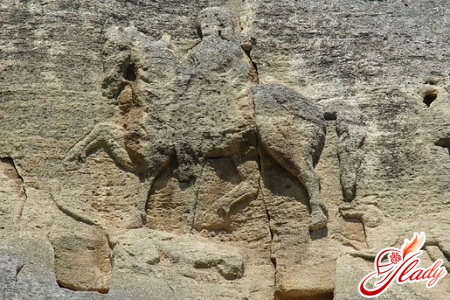
Madara Horseman
Мадарский всадник является единственным в Европе монументальным каменным рельефом начала VIII века. Его высекли на отвесной скале Мадарского плато на высоте 23 метров со стороны северо-западного склона. На рельефе изображен всадник, пронзивший копьем льва, и собака, бегущая за конем. Эта триумфальная сцена символизирует мощь болгарского государства и величие болгарского владетеля. Вокруг рельефа на греческом языке высечены 3 надписи. В этих надписях впервые упомянуто слово «болгары». Местность Мадара являлась культовым центром разных времен (античного и средневекового). Здесь сосредотачивалась духовная жизнь и фракийцев, и болгар. Наскальный рельеф «Мадарский всадник» находится в 1,5 км от села Мадара, в 380 км в восточном направлении от Софии. Район Мадары объявлен археологическим и национальным историческим заповедником. В 1979 году объявлен памятником всемирного значения под защитой ЮНЕСКО. 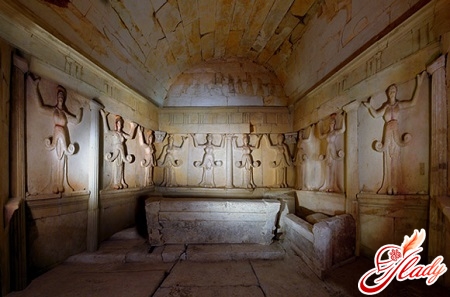
Plakovo Monastery, Thracian tomb near the village of Sveshtari
The Plakovo Monastery is located in the middleStara Planina. It was built during the reign of Tsar Ivan Asen II (13th century) and was destroyed when Bulgaria fell into Ottoman slavery. It was restored in 1450 and 1845, and the monastery church was built at the same time. During the Renaissance, the monastery was an important literary and spiritual center, containing many early printed books and ancient manuscripts. Plakovo Monastery is a cultural monument, located 18 km south of Veliko Tarnovo. Thracian tomb near the village of Sveshtari. This is a unique monument of Hellenistic Thracian art from the 3rd century BC (first half). It is the most significant evidence for the Thracian civilization. It was discovered in 1982 during archaeological excavations of a Thracian burial mound. The tomb has three almost square chambers and a corridor. It is located 470 km from Sofia. In 1986 it was declared a cultural monument under the protection of UNESCO. The sights of Bulgaria, of course, are not limited to this list. It is a fascinating country with a rich history and unique landscape. Famous sights of Bulgaria are: Sreberna Reserve, Varna Museums, Kazanlak Thracian Tomb, Boyana Church, Gabrovo (Sakol) Monastery, Bachkovo Monastery, Kilifarevo Monastery, Cape Kaliakra, Vbiti Kamani (Stone Forest) and many others.




